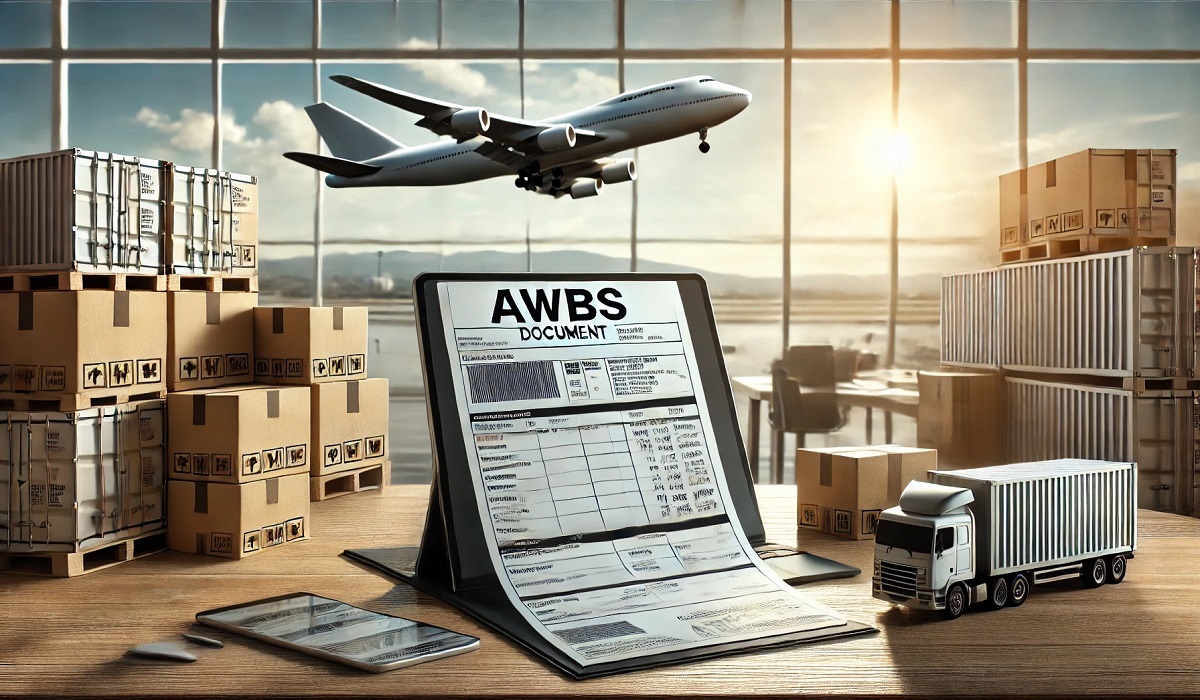GUIDE
AWBs Documents: A Complete Guide to Air Waybills

In the world of logistics and air cargo transport, AWBs documents play a critical role in ensuring seamless operations. These documents serve as essential records for air shipments, providing crucial details about the sender, recipient, cargo, and terms of transport. Understanding AWBs documents is vital for businesses, logistics professionals, and individuals involved in the shipping industry. In this guide, we will explore the purpose, structure, and importance of AWBs, along with helpful tips for handling them efficiently.
What Are AWBs Documents?
AWBs documents, short for Air Waybills, are legal contracts between the shipper (consignor) and the airline or carrier. They act as a receipt of goods and outline the terms and conditions of air cargo transportation.
These documents are non-negotiable and serve multiple purposes, including:
- Providing proof of shipment.
- Acting as a contract between the shipper and carrier.
- Tracking the movement of goods during transit.
- Serving as evidence for customs clearance and compliance.
AWBs are mandatory in international air freight transport, ensuring the smooth flow of cargo across borders.
Types of AWBs Documents
AWBs documents are divided into two main types:
1. Airline AWB
- Issued by the airline that is transporting the cargo.
- Includes the carrier’s logo and pre-printed identification numbers.
2. Neutral AWB
- A standard, non-branded document issued by freight forwarders.
- Allows flexibility for logistics companies working with multiple airlines.
Both types contain identical information, but the branding and usage depend on the party issuing the AWB.
Key Components of AWBs Documents
AWBs documents contain important details that ensure transparency and proper cargo handling. Each section provides specific information needed for efficient transport and tracking. Here are the primary components of an AWB:
- AWB Number
- A unique 11-digit number is used for cargo tracking.
- Example format: XXX-12345678.
- Shipper’s Details
- Name, address, and contact information of the sender.
- Consignee’s Details
- Recipient’s name, address, and contact details.
- Origin and Destination
- Indicates the airport of departure and arrival.
- Cargo Description
- Details about the goods being shipped, including weight, quantity, and dimensions.
- Declared Value for Customs
- The monetary value of the shipment for customs clearance.
- Terms and Conditions
- Legal clauses outlining carrier responsibilities, liabilities, and agreements.
- Charges
- Information on freight charges, including pre-paid or collect payments.
- Signature and Date
- Authorized signatures from the shipper and carrier, along with the date of issuance.
Each component ensures that AWBs documents meet legal, operational, and compliance requirements.
Importance of AWBs Documents in Logistics
AWBs documents are indispensable in air freight logistics for the following reasons:
- Proof of Shipment: Acts as a legal receipt acknowledging cargo acceptance.
- Cargo Tracking: Enables real-time tracking of shipments using the AWB number.
- Customs Clearance: Provides essential details required for international customs processes.
- Liability and Claims: Specifies terms for handling damage or loss claims during transit.
- Operational Efficiency: Facilitates seamless communication between shippers, carriers, and consignees.
Without AWBs documents, the transportation of goods would lack organization, accountability, and transparency.
How to Fill Out AWBs Documents Correctly
Ensuring accuracy when completing AWBs documents is crucial to avoid delays or errors during shipping. Follow these steps for proper documentation:
- Verify Shipper and Consignee Information
- Double-check names, addresses, and contact numbers to ensure accuracy.
- Include Accurate Cargo Details
- Record the exact weight, dimensions, and description of the goods.
- Assign the Correct AWB Number
- Use a unique identifier provided by the airline or freight forwarder.
- Declare the Cargo Value
- Specify the value of goods for customs compliance and insurance purposes.
- Identify Freight Charges
- Mark whether charges are pre-paid or collected.
- Sign and Date the Document
- Both the shipper and carrier must authorize the AWB.
Properly filled AWBs documents ensure smooth customs clearance and cargo delivery without interruptions.
Common Mistakes to Avoid with AWBs Documents
Errors in AWBs documents can lead to shipping delays, fines, or cargo misplacement. Avoid these common mistakes:
- Incorrect Shipper or Consignee Information: This leads to delivery errors or customs delays.
- Missing or Incomplete Details: Inaccurate cargo descriptions or weights may result in shipment holds.
- Invalid AWB Numbers: Tracking becomes impossible without a correct identifier.
- Omitted Signatures: Missing authorizations can invalidate the document.
- Failure to Declare Cargo Value: Causes issues during customs checks or insurance claims.
By double-checking AWBs documents, shippers and carriers can prevent unnecessary complications.
How to Track Shipments Using AWBs Documents
AWBs numbers play a crucial role in shipment tracking. Follow these steps to monitor your cargo:
- Locate the AWB Number
- The 11-digit AWB number is typically found at the top of the document.
- Visit the Carrier’s Tracking Page
- Use the airline’s website or logistics partner’s portal.
- Enter the AWB Number
- Input the number into the tracking field to view shipment status.
- Check Updates
- Track real-time progress, including departures, arrivals, and delivery estimates.
AWBs tracking provides transparency, allowing shippers and consignees to monitor cargo movement with ease.
Benefits of Digital AWBs Documents
Modern logistics operations have increasingly adopted digital AWBs, streamlining the documentation process. Here are some benefits of electronic AWBs (e-AWB):
- Reduced Paperwork: Eliminates the need for physical documents.
- Faster Processing: Digital submissions enable quicker handling and approvals.
- Improved Accuracy: Reduces errors caused by manual data entry.
- Cost Savings: Lower administrative and printing costs.
- Eco-Friendly: Promotes sustainability by reducing paper waste.
Digital AWBs are revolutionizing air cargo operations, making the process more efficient and reliable.
Conclusion
AWBs documents are vital tools in the logistics and air cargo industry, ensuring organized, transparent, and efficient transportation of goods. By understanding their purpose, components, and importance, businesses and individuals can streamline their shipping processes. Whether you are dealing with paper or electronic AWBs, accuracy and compliance are key to avoiding delays or complications. Use this guide to master AWBs documentation and enhance your air cargo experience.
FAQs
What is the purpose of AWBs documents?
AWBs documents serve as a legal contract, shipment receipt, and tracking tool for air cargo transportation.
How can I get an AWB number?
The AWB number is issued by the airline or freight forwarder responsible for transporting the cargo.
Are AWBs documents mandatory for all air shipments?
Yes, AWBs are required for both domestic and international air cargo to ensure compliance and organization.
What happens if there is an error in AWBs documents?
Errors can result in shipping delays, customs issues, or additional charges. It’s important to review the details thoroughly.
What is the difference between an airline AWB and a neutral AWB?
An airline AWB is branded with a carrier’s logo, while a neutral AWB is unbranded and used by freight forwarders.
Can AWBs documents be tracked online?
Yes, AWBs numbers can be entered on the carrier’s website to track the status and location of shipments.

 BUSINESS8 months ago
BUSINESS8 months agoService Top: Understanding Role, Dynamics, and Consent in Relationships

 TECHNOLOGY7 months ago
TECHNOLOGY7 months agoSSIS 858: Everything You Need to Know

 GUIDE7 months ago
GUIDE7 months agoLookmovie2.to Legit: A Detailed Review of Safety and Features

 FASHION8 months ago
FASHION8 months agoDIY Tips to Customize Your Orange Prom Dress and Stand Out

 GUIDE7 months ago
GUIDE7 months agoTokybook: Your Gateway to the World of Audiobooks

 TECHNOLOGY8 months ago
TECHNOLOGY8 months agoUnderstanding Libgen: The Ultimate Free Ebook Library

 GUIDE8 months ago
GUIDE8 months agoLeague of Graphs: The Ultimate Guide to League of Legends Stats and Analysis

 GUIDE8 months ago
GUIDE8 months agoLook at All Those Chickens: The Story Behind the Viral Meme
















